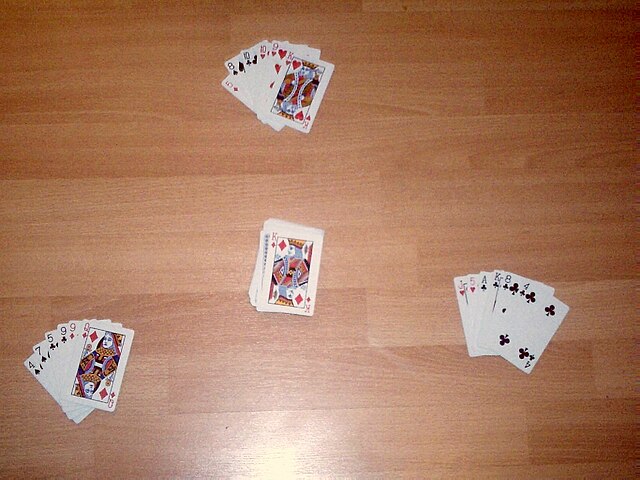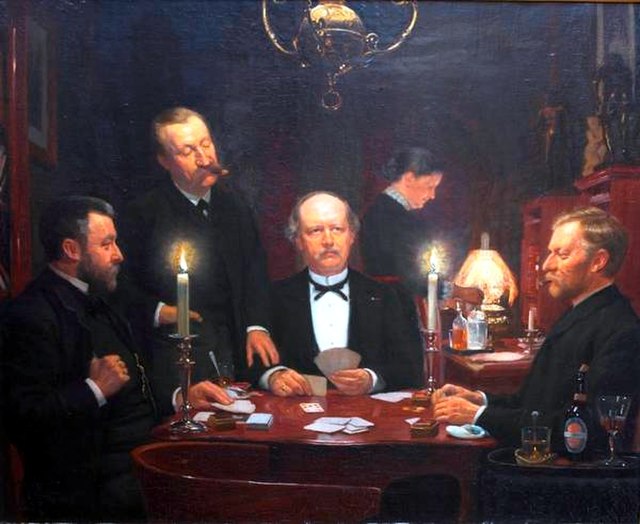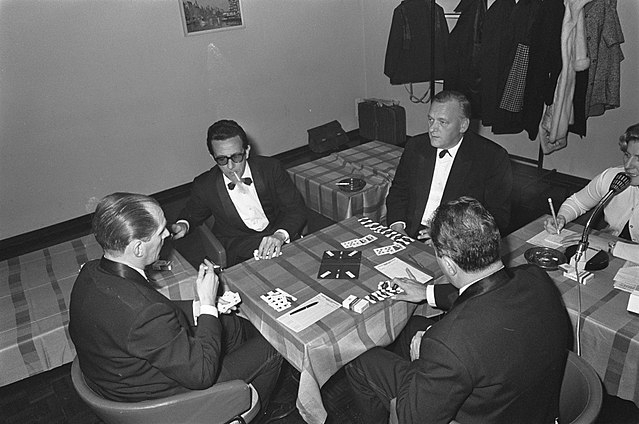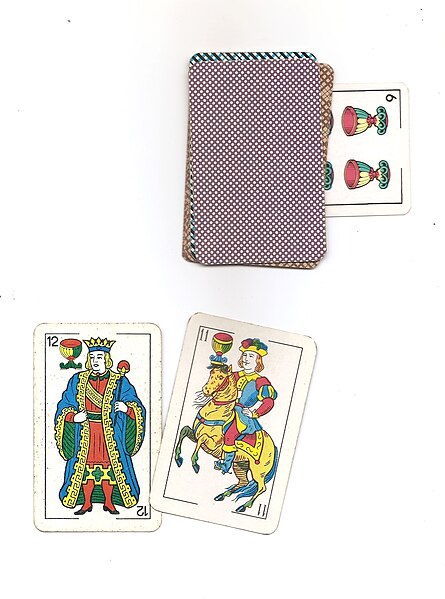All fours is a traditional English card game, once popular in pubs and taverns as well as among the gentry, that flourished as a gambling game until the end of the 19th century. It is a trick-taking card game that was originally designed for two players, but developed variants for more players. According to Charles Cotton, the game originated in Kent, but spread to the whole of England and eventually abroad.
It is the eponymous and earliest recorded game of a family that flourished most in 19th century North America and whose progeny include pitch, pedro and cinch, games that even competed with poker and euchre. Nowadays the original game is especially popular in Trinidad and Tobago, but regional variants have also survived in England. The game's "great mark of distinction" is that it gave the name 'jack' to the card previously known as the knave.
All fours, depicted in 1783
Setup for a three player game
A trick-taking game is a card or tile-based game in which play of a hand centers on a series of finite rounds or units of play, called tricks, which are each evaluated to determine a winner or taker of that trick. The object of such games then may be closely tied to the number of tricks taken, as in plain-trick games such as contract bridge, whist, and spades, or to the value of the cards contained in taken tricks, as in point-trick games such as pinochle, the tarot family, briscola, and most evasion games like hearts. Trick-and-draw games are trick-taking games in which the players can fill up their hands after each trick. In most variants, players are free to play any card into a trick in the first phase of the game, but must follow suit as soon as the stock is depleted. Trick-avoidance games like reversis or polignac are those in which the aim is to avoid taking some or all tricks.

A trick of four cards. North led the 10♠. Usually all players must follow suit and play a spade unless they have none. East does so with the K♠. South does not have a spade, so plays the J♦, and West the 7♥. In a notrump game, east wins the trick, having played the highest card of the suit led (unless the game is an ace–ten game, with 10 being higher than the king, making north win the trick). However, if diamonds or hearts are trumps, south or west respectively win.
"The Four Friends Playing Ombre" (1888) by Malthe Engelstedt
Bridge is played between two partnerships
A 6 of cups is tucked under the deck in a game of Brisca, to show that cups is the trump suit






